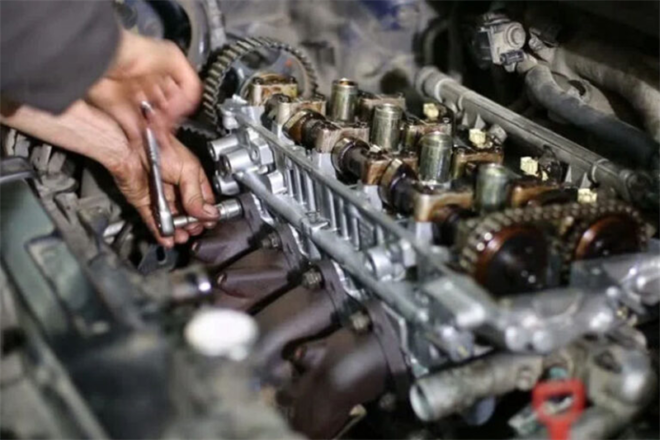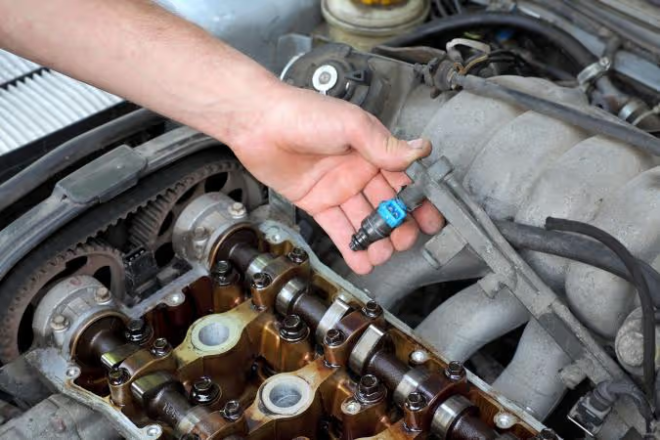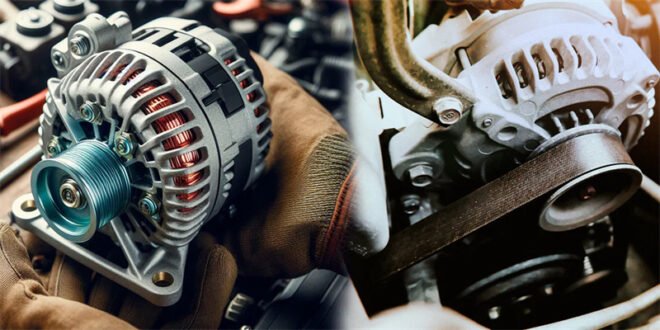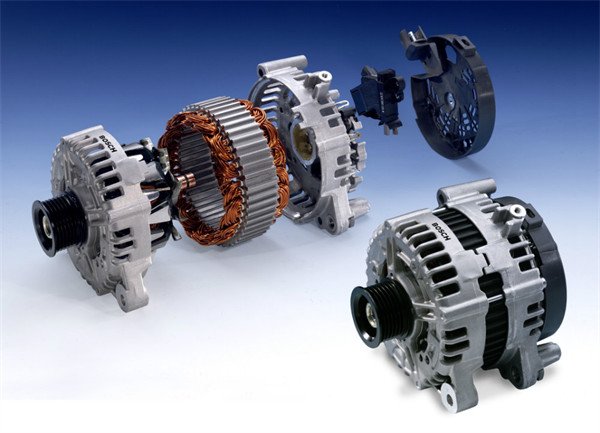When it comes to vehicle maintenance, most drivers focus on high-profile components like the engine, transmission, and tires. However, one of the most important elements that often goes unnoticed is the alternator. This small yet mighty device plays a critical role in keeping your car running smoothly by powering your electrical systems and keeping the battery charged. In this article, we’ll dive into the mechanics of the alternator, how it works, why it’s essential for your vehicle’s operation, and how to spot signs of a failing alternator. Whether you’re a car enthusiast or just a regular driver, understanding the alternator will help you appreciate the technology that powers your car’s electrical system.
What is an Alternator?
At its core, the alternator is an electromechanical device that converts mechanical energy into electrical energy. It is responsible for generating the electrical power required to run a vehicle’s electrical systems and charge the battery. Once the car’s engine is started, the alternator takes over the job of supplying power to systems such as the headlights, air conditioning, radio, and power windows.
Unlike older vehicles that used a generator to produce DC (direct current) power, modern vehicles are equipped with alternators, which generate AC (alternating current) and convert it to DC for battery charging. This allows for a more efficient power system and ensures the vehicle’s battery is consistently charged.
How Does an Alternator Work?
- Mechanical to Electrical Energy Conversion
The alternator is connected to the engine via a drive belt, usually powered by the engine’s crankshaft. As the engine runs, it spins the alternator’s rotor (the rotating part of the device). This mechanical energy from the engine is transferred to the rotor, which turns inside the stationary stator. The movement of the rotor generates alternating current (AC), which is then converted to direct current (DC) by the alternator’s rectifier. - Rectification and Voltage Regulation
The alternator’s rectifier consists of diodes that convert the AC power into the DC power required by the vehicle’s electrical systems. This current is then used to charge the vehicle’s battery and power the vehicle’s lights, radio, air conditioning, and other electronics. The alternator also contains a voltage regulator, which ensures that the electrical output is maintained at a consistent and safe level, typically around 14.5 volts.
Why is the Alternator So Important?
- Powering the Electrical Systems
Every car has a range of electrical components that need a continuous power supply to function. These components include your headlights, radio, air conditioning, power seats, windows, and much more. The alternator is the heart of the vehicle’s electrical system. Without it, the car would run off the battery alone, and the battery would quickly lose charge. - Charging the Battery
One of the alternator’s key functions is to keep the vehicle’s battery charged. The battery provides the initial power required to start the engine, but it is the alternator that keeps the battery charged once the engine is running. Without the alternator, the battery would not be able to provide power for long, and the car would not be able to run for extended periods. - Maintaining Efficiency and Reliability
As cars become more reliant on electronic systems, the role of the alternator becomes even more important. A properly functioning alternator ensures that your vehicle’s electrical systems are working efficiently and reliably, from the smallest interior lights to the most complex computer systems in the engine.
Components of an Alternator
To fully appreciate the importance of the alternator, it’s essential to understand the different parts that make it work. Here are the main components:
- Rotor
The rotor is the rotating part of the alternator that is driven by the engine’s mechanical energy. It contains a set of electromagnets that spin inside the stator to create a magnetic field, which induces an electrical current. - Stator
The stator is the stationary part of the alternator that contains copper windings. As the rotor spins inside the stator, the motion generates an alternating current, which is then converted to DC. - Rectifier
The rectifier is a set of diodes that convert the alternating current (AC) generated by the alternator into direct current (DC), which is required to charge the battery and power the vehicle’s systems. - Voltage Regulator
The voltage regulator controls the output of the alternator, ensuring that the voltage remains at a safe level (around 14.5 volts). This prevents overcharging or undercharging the battery, which could lead to damage. - Cooling Fan
An internal fan is used to cool the alternator while it’s working. The cooling fan helps to dissipate the heat generated by the electrical process and prevents overheating.
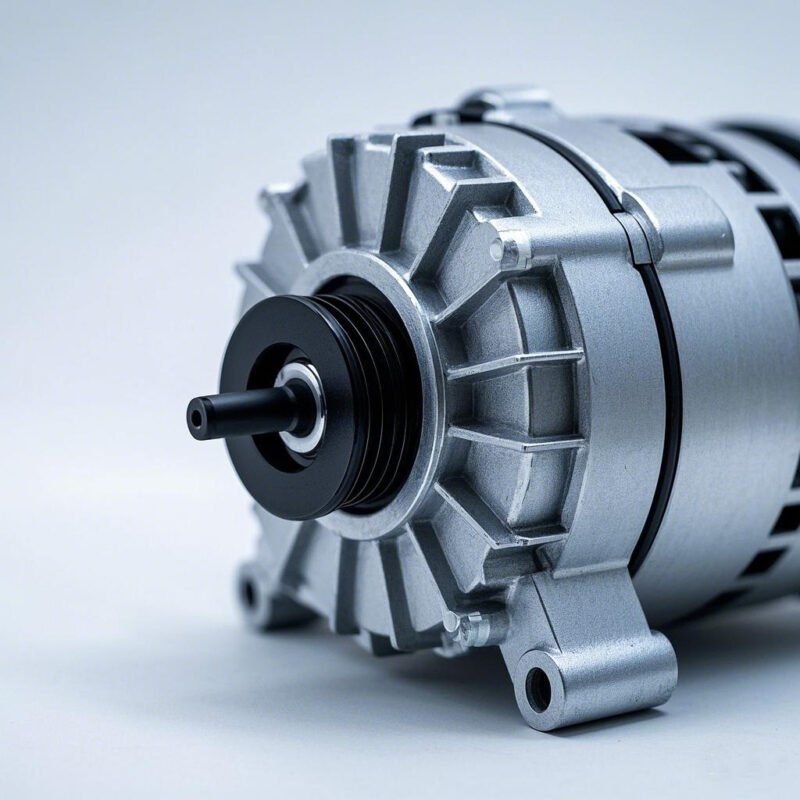
Signs of a Failing Alternator
If your alternator is malfunctioning, it’s crucial to catch it early to avoid further damage to your vehicle. Here are some common signs that your alternator might be failing:
- Dim or Flickering Lights
One of the first signs of a faulty alternator is dimming or flickering lights. If your headlights or dashboard lights are constantly getting dimmer, it’s an indication that the alternator isn’t providing enough power to keep the electrical system running properly. - Electrical Failures
If electrical components such as the radio, power windows, or air conditioning stop working properly, the issue may lie with the alternator. A malfunctioning alternator can’t provide the necessary power for these systems to function. - Battery Warning Light
Most modern vehicles have a battery warning light that will illuminate on the dashboard if there’s an issue with the alternator or the charging system. If this light turns on, it’s important to get your alternator checked immediately. - Dead Battery
A faulty alternator won’t charge the battery properly, which can lead to a dead battery. If your battery repeatedly runs out of charge, even after being jump-started, the alternator could be the cause. - Strange Noises
A grinding or whining noise coming from the alternator can be a sign of worn-out bearings or a loose belt. These noises often indicate that the alternator is failing and needs to be replaced.
Maintaining Your Alternator
Regular maintenance of your alternator can help prevent unexpected breakdowns and costly repairs. Here are some tips for maintaining your alternator:
- Inspect the Drive Belt
The drive belt connects the engine to the alternator, and if it becomes loose or worn, it can affect the performance of the alternator. Check the drive belt regularly and replace it if necessary. - Check the Battery Condition
Since the alternator and battery work together, it’s important to ensure that your battery is in good condition. Make sure the battery terminals are clean and free of corrosion to ensure proper power flow. - Look for Warning Signs
Be vigilant for signs that your alternator may be failing. Early detection of issues can save you from being stranded or facing costly repairs down the road.
Conclusion: The Importance of the Alternator in Your Vehicle
The alternator may not be as glamorous as the engine or transmission, but it is undoubtedly one of the most vital components of your vehicle. By converting mechanical energy into electrical power, the alternator keeps your battery charged and ensures that all of your vehicle’s electrical systems are functioning properly. Regular inspection and maintenance of the alternator can help ensure the longevity and reliability of your vehicle, preventing unexpected issues and breakdowns. So, next time you get behind the wheel, remember to appreciate the work the alternator is doing to keep your car running smoothly.


